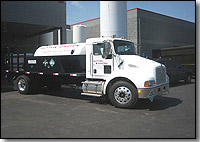Our Outlook for the New Year
Leave a CommentThe New Year is now underway—do you know what that means? It’s time for us, as a company, to look back at our successes of the past year and work to capitalize on them in the coming year. This past year proved to be a record year for Sutton Garten is sales, and that is something we only hope continues into 2014. In order to maintain our success amidst a stagnant U.S. economy, our biggest goal of the new year is this: become more diversified so that we can weather any future economic downturns.
Diversifying our company has certainly helped to make us more available to our customers; we plan on using this foundation to continue adding capabilities to our forte. Here’s a quick rundown of what lies ahead in 2014 for us:
CO2: As we garner more interest from customers in the CO2 division, we are looking at investing in another bulk CO2 truck or increasing our current horizontal tank and replacing it with a vertical CO2 tank.
Welding: Our welding training classes have been expanding and our relationship with the Independent Welding Distributors Cooperative (IWDC) remains strong.
Product line: The inventory of our product line will be increasing, as Hypertherm will be introducing a new plasma cutting line, Miller continues to develop an air filtering line of equipment, and ColdJet’s dry ice blasting equipment remains a high seller and renter.
Trade shows: We just returned from the PRI trade show, and we plan on attending other industry shows throughout the coming year, so that we remain on top of the industry.
While this has certainly been a successful year for us, we have our hands full when it comes to making 2014 an even better year for our company. We hope you’re a part of it!









